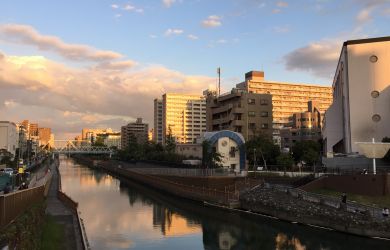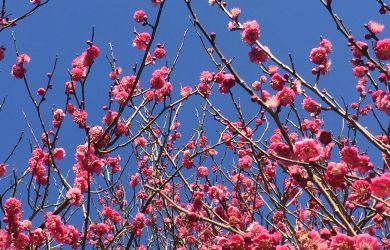
Originally published on metropolis.co.jp on August 2009

© Dance Hakushu 2009
The roots of butoh lie partly in German expressionist dance, but also in the movements of peasants in Tohoku, the poor northern part of Honshu where founder Tatsumi Hijikata was born. Understand this and you are halfway to comprehending the life work of Hijikata disciple Min Tanaka.
In 1985, after collaborating with Hijikata for several years, Tanaka founded Body Weather Farm, a kind of agricultural commune for artists in Yamanashi Prefecture. His purpose was to provide an environment in which artists could explore the origins of dance by experiencing farm life. This seemingly strange idea comes into perspective when you consider that many traditional dances evolved out of harvest rituals and other festivals tied to the earth.
For the past two decades, Tanaka has gathered dancers, musicians and artists at his Body Weather Farm once a year for Dance Hakushu, a midsummer festival of performances and workshops. For the 2009 edition, however, he decided to bring the seasonal experiences of farm life closer to his audience by splitting Dance Hakushu into four programs.
The series began in June with Soil, in which participants got their hands dirty planting rice, and it continues next week with Fire, in which they’ll experience the tending and weeding of rice paddies under the midsummer sun. Water takes place around the autumn harvest in October, while the program concludes with Sky in February.
“So far, Dance Hakushu visitors might have had an impression that the festival is a place for art and performance per se just in summer—a fashionable relish on top of farm life,” explains producer Kazue Kobata. “However, this year, we would like to offer much richer experiences—the experiences we had long wanted to share with the summer-only visitors: the sensation of mud and freshness of rice planting in June; the magnificent view of harvest and ripe plants in October; stern white mountains, crisp air and sky in February.”
Dance devotees can take part in weekday workshops, while for the uninitiated the “entertainment” part of the program comes in the form of weekend performances. After helping to weed rice paddies in the morning, visitors will enjoy a wide range of dance and music in a pristine outdoor setting.
One of the highlights promises to be a Saturday program by dancer/choreographer Ikuya Sakurai. A onetime student of butoh figure Akira Kasai, Sakurai grew up in the ancient capital of Nara, where he had many opportunities to observe Buddhist priests and take in performances of the ancient theater form noh. Sakurai seeks to integrate traditional Japanese forms and practices in his choreography, such as the technique known as suri-ashi, in which the feet are almost static.
For the musically inclined, there will be performances of Japanese music, ranging from the earthy Tsugaru shamisen represented by Chikuzan Takahashi to the cerebral “contemporary classical” sounds of internationally renowned singer Mutsumi Hatano.
In addition to guest performances, several full-time residents of the Body Weather Farm—some of whom have been there for decades—will themselves be dancing. They may be the ones who most closely approach the symbiosis of art and nature that Dance Hakushu founder Tanaka aims for.
Hakushu, Yamanashi Prefecture, Aug 8-16. See dance listings for details.







